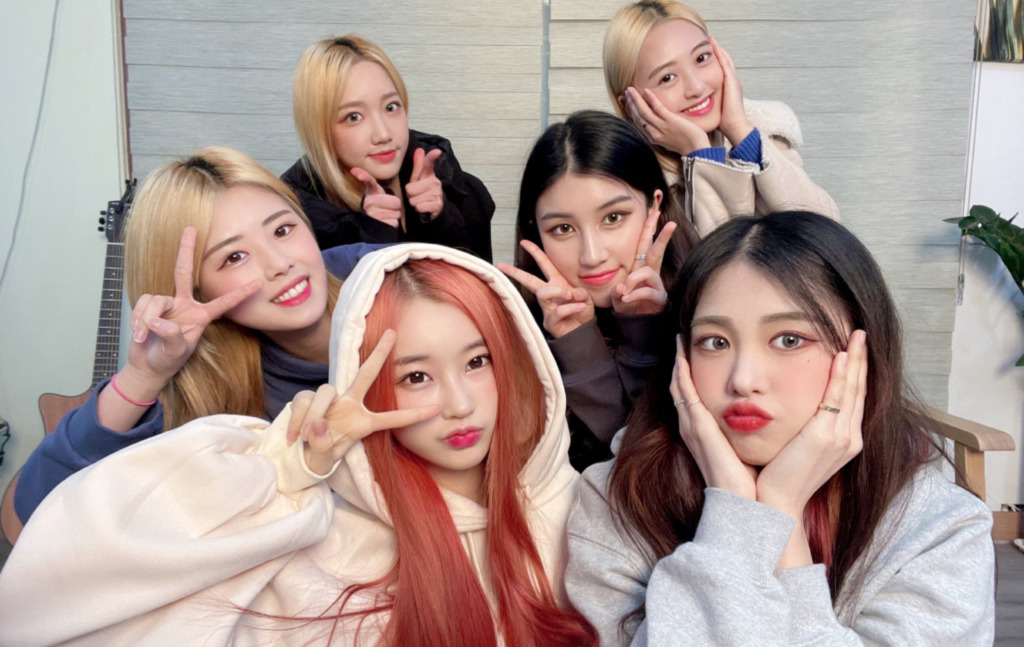K-Pop is undergoing a silent power shift. Gen Z is no longer a passive audience; they directly shape the game, deciding who rises and who falls. In the past, the “sweetheart” image—flowy dresses and sweet smiles—was the golden standard. Now, bold, powerful “queens” are taking over. But is this the only winning formula?

Gen Z Rewrites the Rules: TikTok and Spotify Take Over
In the past, album sales and music show trophies defined success. SNSD, BTS, and TWICE built their empires on dedicated fandoms and victories on Music Bank and Inkigayo. But Gen Z isn’t playing by the old rules.
A TikTok dance can now replace an entire promotion campaign. aespa’sNext Level was initially criticized, yet the #NextLevelChallenge (over 5 million views on TikTok in early 2025) turned it into a massive hit. The same happened with IVE—Love Dive dominated Korean charts for 943 consecutive days on the MelOn Daily Chart (as of October 2024) and surpassed 400 million streams on Spotify (June 2024), proving the song’s lasting appeal.
Even Fifty Fifty took a bold step. With no large fandom and minimal promotions, Cupid still climbed to #17 on the Billboard Hot 100, thanks to over 10 million TikTok videos. The contrast is clear:
- Gen 3: Fandom was everything—physical albums, concerts, trophies.
- Gen 4: Virality is the ultimate weapon—TikTok, Spotify, YouTube.
K-Pop in the Gen Z era doesn’t need big companies or massive fandoms—just one viral song can take you to the top.
“Sweethearts” in the 4.0 Era: Soft Yet Sexy?
Gone are the days when female idols had to choose between cute or strong. Gen Z proves that “sweethearts” can be cool and confident in their own way.
NewJeans: The New-Gen “Sweethearts”
Not overly sexy, not girl crush—NewJeans opts for a soft yet high-fashion aesthetic. Super Shy and ETA went viral on TikTok with over 2 million videos, while their Y2K fashion (baggy jeans, crop tops) set trends worldwide.
🔥 Why they stand out: They balance softness and individuality, breaking away from rigid stereotypes.
TWICE: From Soft to Strong
Once the symbol of femininity with Cheer Up, TWICE reinvented themselves with Set Me Free (2023), embracing self-empowerment. Their US tour at MetLife and SoFi Stadium sold out, proving they’ve won over Gen Z.
🔥 Why they stand out: From bubblegum pop to a refined symbol of female strength.
IVE: No More Princesses Waiting for Princes
Love Dive delivers a bold message: “If you like me, dare to dive in!” I AM further reinforces self-confidence.
🔥 Why they stand out: Their lyrics reflect Gen Z’s mindset—independent and fearless.
The “Queens” of Power
BLACKPINK threw their princess dresses into the trash, declaring:
“We are sexy goddesses, the new standard of K-Pop.”
Since DDU-DU DDU-DU, they shattered the “good girl” image and entered the realm of absolute dominance:
- Fashion? Say goodbye to pink dresses and bows—tight leather, sheer mesh, and bold cut-outs define their style.
- Music? No more “I love you, oppa~“—it’s Kill This Love, How You Like That, Pink Venom—power anthems of unapologetic queens.
- Stage presence? No more winking and cutesy moves—just fierce walks, fiery choreo, and captivating charisma.
CHANEL, Dior, Celine—these luxury brands didn’t pick BLACKPINK for their cuteness. They represent luxury, power, and global appeal. BLACKPINK made sexy their crown.
Does Gen Z Decide Everything?
Gen Z is changing K-Pop, but is this trend sustainable? If everything is driven by TikTok algorithms, will songs lose their artistic value and become mere digital products? Can “idols without fandoms” last, or will strong fandoms remain the foundation of K-Pop?
💥 What do you think? Should K-Pop balance viral trends with long-term artistic value, or should we let Gen Z lead the way?